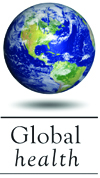|
|
|

|
Global
health
 South Korea:
TKM works to restore body balance South Korea:
TKM works to restore body balance
|
by Jungsoon Choi
Biostatistics &
Epidemiology
South Korea, with the official name the Republic of Korea, is located
on the south part of the Korean Peninsula. The population of South
Korea is about 49 million and its official language is Korean, which
was promulgated by Sejong the Great in the 15th century. Ethnically,
South Korea is one of the most homogeneous countries in the world with
more than 98 percent of inhabitants having Korean ethnicity.
Traditional Korean Medicine (TKM) is getting popular worldwide, and
many people from around the world have visited Korea to get health
treatment services. The basic principle of TKM is that all body organs
are interconnected by channels so illness is not a problem with a
particular part of the body but rather an imbalance of energy in the
entire body. Thus, the goal of TKM is restoring balance in the body.
TKM originated in ancient times, about 5,000 years ago. TKM has been
influenced by Chinese medicine, but it also has developed its own
features. In 1613, Jun Heo wrote “Donguibogam,” consisting of 25
volumes, which is one of the famous medicine books in Korea. This book
presented not only the Korean medical theories of the time but also
medical theories from all over East Asia. It covers how to prevent
disease and serves as the basis of medical practices and also
introduces healthy foods. In 2009, “Donguibogam” was added to the world
heritage List of UNESCO, which was the first time ever for a medical
book. This book has spread to East Asia and still is widely used as one
of the main textbooks for modern traditional Korean medical students.
In the 19th century, the Sasang typology, written by Jae-ma Lee,
divided people into four different types based on their traits and
emotion, and developed treatments for each type. This explained the
individual differences in behavioral patterns, physical characteristics
and susceptibility to a certain disease based on their
bio-psychological traits. This Sasang typology is a unique theory in
TKM and has been used as a major treatment regimen.
There are several treatments in TKM, such as herbal medicine,
acupuncture, moxibustion, aroma therapy, and meditation. Recently, many
studies in TKM have demonstrated therapeutic effects, its underlying
mechanism and the association with genetic variations.
Facts about South
Korea
- Life expectancy is
75 years for males and 82 years for females (2005).
- The annual birth
rate is approximately nine births per 1,000 people, which is the
world’s lowest rate.
- South Korea has
the world’s highest estimated national IQ, with leading rankings in
mathematics, science, problem solving and reading, as declared by the
Organization for Economic Co-operation and Development.
- Snuppy, the
world’s first cloned dog (Afghan Hound), was created at Seoul National
University.
- The Korea Advanced
Institute of Science and Technology in South Korea developed the
world’s second walking humanoid robot, HUBO.
- The eldest in the
house is considered the most wise.
- When you enter a
South Korean home, the first thing you do is remove your shoes.
- When the first
night of the new year comes, everybody hides their shoes. This is
because there is a belief that a ghost will come down and try on
everyone’s shoes. If the ghost finds a pair it likes, it will take
them. It is thought that the owner of the shoes will then have bad luck
for the whole year.
- Taxi cabs are
color coded. Hail a grey or white taxi and you get a basic car with a
less experienced but still fully qualified driver. Choose a black cab
and get a bit more luxury and a more experienced driver. But it costs
you a few more Won.
- A traditional
Korean roof curves up with a smile.
Clinician’s corner
One of your patients is traveling to S. Korea to visit friends
and
relatives. He asks about his chances of becoming infected with avian
influenza H5N1 during his trip and wants to know how to protect
himself. Which of the following statements about avian influenza is
not correct?
A. It has been confirmed in S. Korea in birds
B. Currents influenza
vaccines are protective
C. Oseltamivir is effective
D. Well-cooked
chicken is safe to eat
The answer is B. Current incluenza
vaccines do not protect against avian influenza. To protect exposure to
this virus, it is recommended to avoid live animal markets and poultry
farms where direct contact with the birds and their secretions is a big
risk. Treatment with the antiviral oseltamivir is effective, especially
if started early in the course of infection.
Upcomng Events
New! International Book Club
Begins at 6 p.m., Oct. 6
Harper Student Center Library, Suite 224 Open to all MUSC students and
postdocs
Charleston History
Walking Tour
7 -9:30 p.m., Oct. 14
Meet at the Circular Fountain downtown
$10 tickets on sale now in Student Programs Open to MUSC internationals
Fright Nights @
Boone Hall
7 p.m., Oct. 17
Meet at Boone Hall Farms Field
$8 tickets on sale Oct. 4, Office of Student Programs Open to MUSC
internationals
Visit http://www.musc.edu/international
or Facebook: MUSC International Programs
Friday, Oct. 1, 2010
|
|
|



 South Korea:
TKM works to restore body balance
South Korea:
TKM works to restore body balance